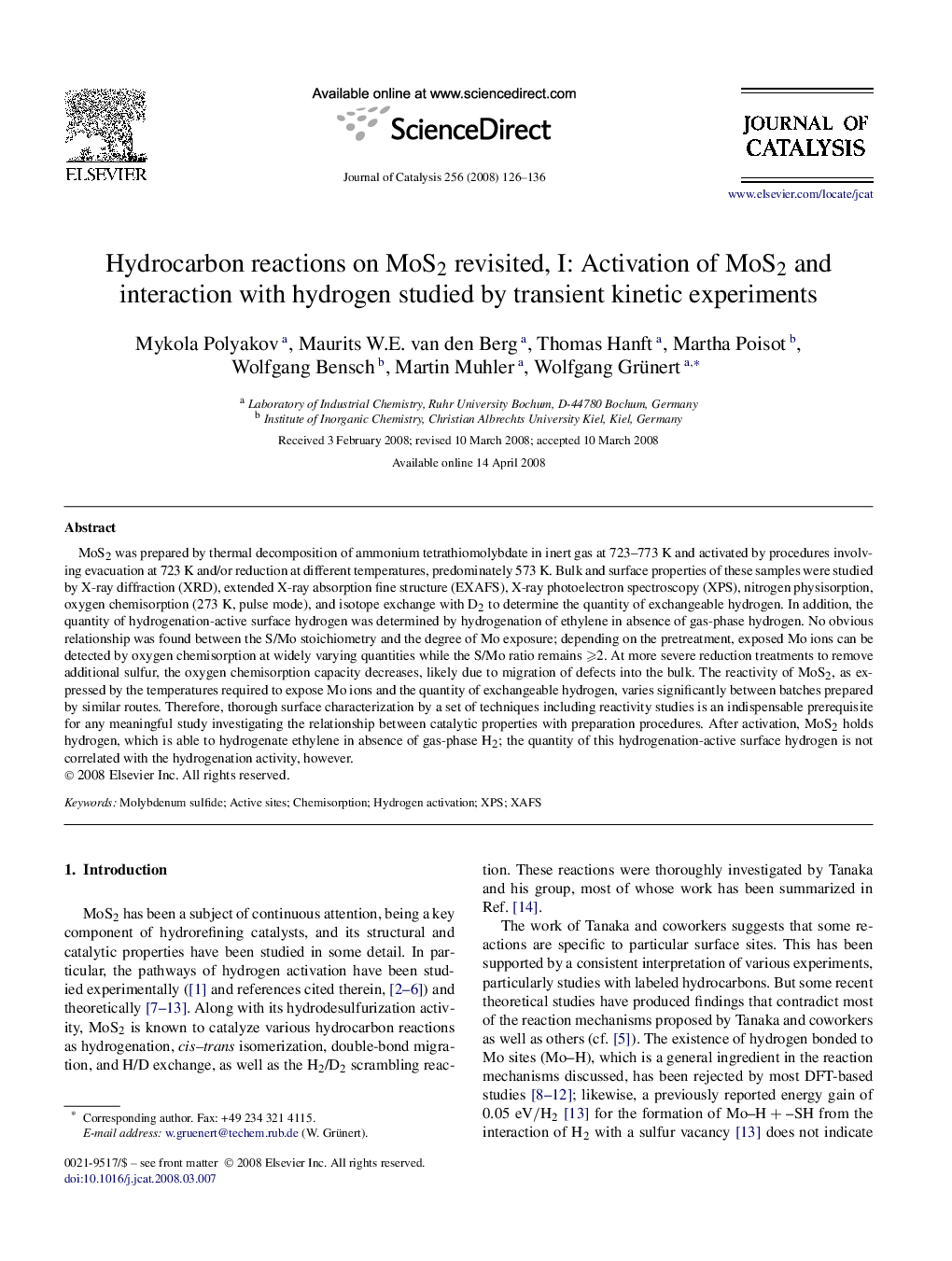| Article ID | Journal | Published Year | Pages | File Type |
|---|---|---|---|---|
| 62724 | Journal of Catalysis | 2008 | 11 Pages |
MoS2 was prepared by thermal decomposition of ammonium tetrathiomolybdate in inert gas at 723–773 K and activated by procedures involving evacuation at 723 K and/or reduction at different temperatures, predominately 573 K. Bulk and surface properties of these samples were studied by X-ray diffraction (XRD), extended X-ray absorption fine structure (EXAFS), X-ray photoelectron spectroscopy (XPS), nitrogen physisorption, oxygen chemisorption (273 K, pulse mode), and isotope exchange with D2 to determine the quantity of exchangeable hydrogen. In addition, the quantity of hydrogenation-active surface hydrogen was determined by hydrogenation of ethylene in absence of gas-phase hydrogen. No obvious relationship was found between the S/Mo stoichiometry and the degree of Mo exposure; depending on the pretreatment, exposed Mo ions can be detected by oxygen chemisorption at widely varying quantities while the S/Mo ratio remains ⩾2. At more severe reduction treatments to remove additional sulfur, the oxygen chemisorption capacity decreases, likely due to migration of defects into the bulk. The reactivity of MoS2, as expressed by the temperatures required to expose Mo ions and the quantity of exchangeable hydrogen, varies significantly between batches prepared by similar routes. Therefore, thorough surface characterization by a set of techniques including reactivity studies is an indispensable prerequisite for any meaningful study investigating the relationship between catalytic properties with preparation procedures. After activation, MoS2 holds hydrogen, which is able to hydrogenate ethylene in absence of gas-phase H2; the quantity of this hydrogenation-active surface hydrogen is not correlated with the hydrogenation activity, however.
